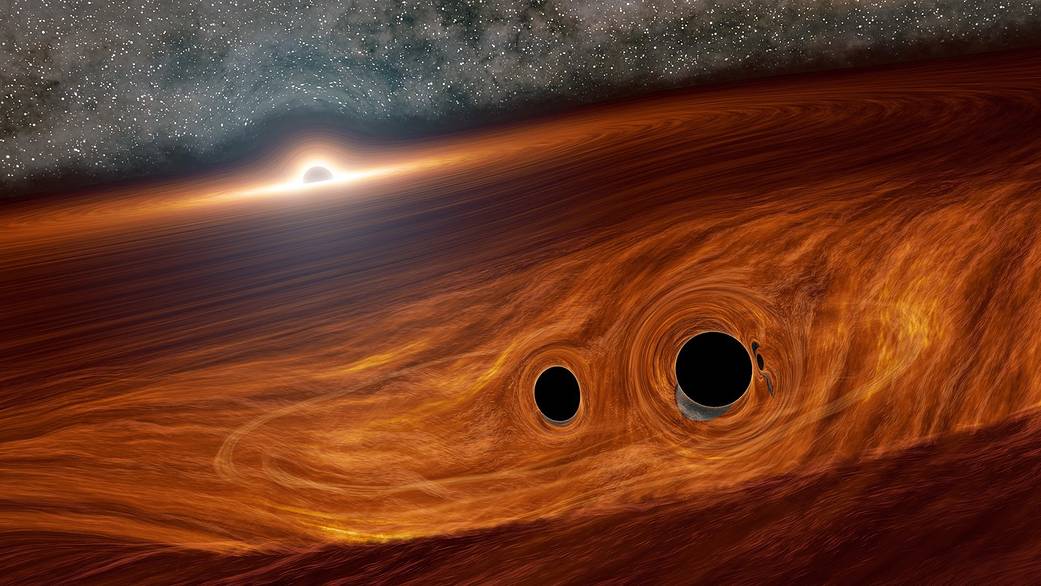Did astronomers see the light from two black holes colliding for the first time?

Astronomers may have seen the light from two black holes smashing into one another for the first time ever.
Black holes are completely dark and therefore invisible to light-detecting telescopes. So far, the only way astronomers have been able to "observe" black holes colliding is by detecting the resulting gravitational waves.
Gravitational waves are ripples through spacetime, predicted by Einstein's general theory of relativity, that are created by extreme collisions between massive celestial objects, like black holes and neutron stars. Since the first gravitational wave detection in 2015, scientists have observed gravitational waves, working to understand their origins and the colliding bodies that may have created them.
Related: New gravitational wave detector picks up possible signal from beginning of time
Because black holes have a gravitational pull so strong that not even light can escape, they are difficult to observe and astronomers have yet to visually identify a collision between two black holes. That is, until now. In new observations, scientists think they may have, for the first time, seen light from what could be the merger of two black holes.
While black holes themselves are completely dark, there are theories that suggest that collisions, or mergers, between black holes could possibly produce a light signal through the material that surrounds them by causing matter to radiate, according to a statement from NASA. A team of astronomers using Caltech's Zwicky Transient Facility (ZTF) at the Palomar Observatory in California thinks they may have detected such a light signal.
The gravitational wave created by the merger was detected on May 21, 2019 by scientists using two different gravitational wave detectors: the European Virgo detector and LIGO (the National Science Foundation's Laser Interferometer Gravitational-wave Observatory). The gravitational wave they detected stems from a collision event dubbed GW190521g that the team thinks could possibly be from two black holes.
Get the Space.com Newsletter
Breaking space news, the latest updates on rocket launches, skywatching events and more!
With this detection, a team of astronomers used ZTF to peer out into the cosmos and search for light signals from the collision. If confirmed, this would be the first time visible light would be used as evidence of two black holes colliding and creating a gravitational wave.
Email Chelsea Gohd at cgohd@space.com or follow her on Twitter @chelsea_gohd. Follow us on Twitter @Spacedotcom and on Facebook.
Join our Space Forums to keep talking space on the latest missions, night sky and more! And if you have a news tip, correction or comment, let us know at: community@space.com.

Chelsea “Foxanne” Gohd joined Space.com in 2018 and is now a Senior Writer, writing about everything from climate change to planetary science and human spaceflight in both articles and on-camera in videos. With a degree in Public Health and biological sciences, Chelsea has written and worked for institutions including the American Museum of Natural History, Scientific American, Discover Magazine Blog, Astronomy Magazine and Live Science. When not writing, editing or filming something space-y, Chelsea "Foxanne" Gohd is writing music and performing as Foxanne, even launching a song to space in 2021 with Inspiration4. You can follow her on Twitter @chelsea_gohd and @foxannemusic.









